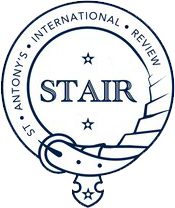Roy Shinar Cohen
For several hours on May 19th, all eyes were turned to Iran, waiting quite literally for the fog to clear to get a conclusive answer. Everyone wanted to know whether Iran’s President, Ebrahim Raisi, and Foreign Minister, Hossein Amir Abdollahian died in a helicopter crash in the Arasbaran Forest, near Iran’s border with Azerbaijan. On May 20th, many awoke to an official statement that they had died.
Iran’s Supreme Leader, Ali Khamenei, declared Raisi’s “martyrdom” along with Abdollahian and several others. Khamenei explained Iran’s Vice-President will head the Executive Branch until elections will be held, at most within 50 days. Unlike Khamenei, however, many celebrated Raisi’s death. Known as the “Butcher from Tehran”, Raisi is accredited with presiding over mass executions in the late 1980s which Human Rights Watch has declared were crimes against humanity. Additionally, since the inception of Raisi’s tenure as President in 2021, the country has cracked down on protesters, especially during the Mahsa Amini Protests in 2022 and 2023. According to the Human Rights Activists News Agency (HRANA), Iranian security forces killed over 500 people and arrested over 18,000 during these protests.
Beyond the question of his memory, which in most places outside Iranian government halls, will likely be negative, we should ask what comes next. Raisi was a conservative politician who was anticipated to replace the 85-year-old Khamenei as Supreme Leader when the time came. Now, his death raises the questions of who will succeed him, in the short-term, and who will succeed Khamenei, an 85-year-old cancer patient, when he dies. Crucially, Raisi died at a highly unstable time for Iran and the region.
Since October, the Middle East has been embroiled in a seemingly ever-escalating conflict. Over the war’s seven months, many of Iran’s proxies attacked Israel from Lebanon, Syria, Iraq and Yemen, and most unnervingly, it has led to substantial escalations in the Israel-Iran conflict after years of “shadow warfare”. On April 1st Israel attacked the Iranian consulate building in Damascus, Syria. The Israeli attack killed Brigadier General Mohammad Reza Zahedi, a senior commander of the Islamic Revolutionary Guard Corp’s (IRGC) elite Quds Force. In retaliation, on April 13th Iran launched an unprecedented attack which combined hundreds of missiles and UAVs from its territory against Israel. Although the attack was largely thwarted by Israel’s missile defence systems courtesy of its security partnerships with Western and regional states, it is unclear whether a routine of such attacks or ones which include more firepower could be intercepted in the future.
Moreover, Iran has the ability to produce multiple nuclear weapons in a short time. According to the latest report by the International Atomic Energy Agency (IAEA), Iran has enough enriched uranium to 60% for approximately three nuclear weapons, and much more uranium enriched to lower levels. Its breakout time to a weapon is estimated in mere weeks. Additionally, Iran’s missile attack demonstrated to the whole world its capability to launch a large-scale attack on Israel, as well as Israel’s dependency on allies to defend itself. This should be taken very seriously.
Taking all of this into consideration, the current turmoil in the Iranian regime is highly worrying. Although Raisi’s power was debatable, as the Supreme Leader has the final say in Iran, it is safe to say he influenced policy in conservative, anti-liberal ways. Now, it is the Guardian Council’s job to find new candidates who will stand for election quickly. However, at least for now, experts have avoided declaring who will be the next Iranian President. Yet, according to reporting by Al-Jazeera, Mohammad Mokhber and Ali Bagheri Kani, who now serve as the interim President and Foreign Minister, are likely to hold high positions in the new administration. Mokhber and Bagheri Kani are known to have worked closely with Raisi and to be aligned with Khamenei, which is essential for advancing the Iranian system.
According to experts, the two front runners to replace Khamenei when he dies were Raisi and Khamenei’s son Mojtaba, a cleric. Khamenei groomed Raisi to replace him as a hard-liner with experience in the Judiciary and the Executive branch who works well with the IRGC. This plan is now history. The problem with the other option, Khamenei’s son, is the Regime prefers to avoid hereditary transfers of power to prevent further hurting its legitimacy. Although it may be what eventually happens, considering the better option is awaiting its funeral proceedings, some other names have been mentioned. Jason Brodsky, the Policy Director of United Against Nuclear Iran (UANI), mentioned Alireza Arafi, a cleric who rises quickly through the ranks, as another possible successor to Khamenei.
The upcoming weeks in Iran ought to be tense and interesting. The Regime is sure to brutally suppress internal challenges if they arise and be less tolerant of external threats. Regional actors, including Israel and Saudi Arabia, as well as Hezbollah and the Houthis, will watch closely to minimize surprises. The comforting news, if there is any in such a story, is that for now, the Iranian Regime considers Raisi’s death the result of a crash during bad weather, not an assassination attempt. If Raisi was assassinated, the culprit risks an all-out war with a nuclear power. Let us hope the most important consequences of this helicopter crash remain the internal power struggles.

